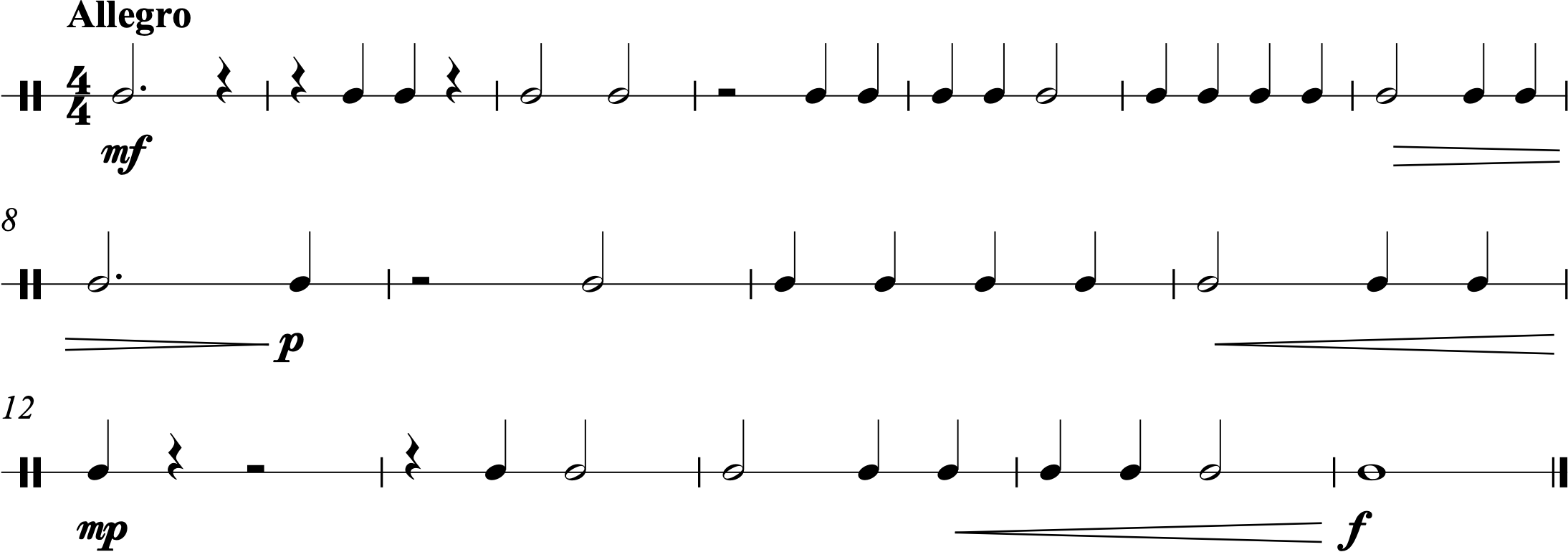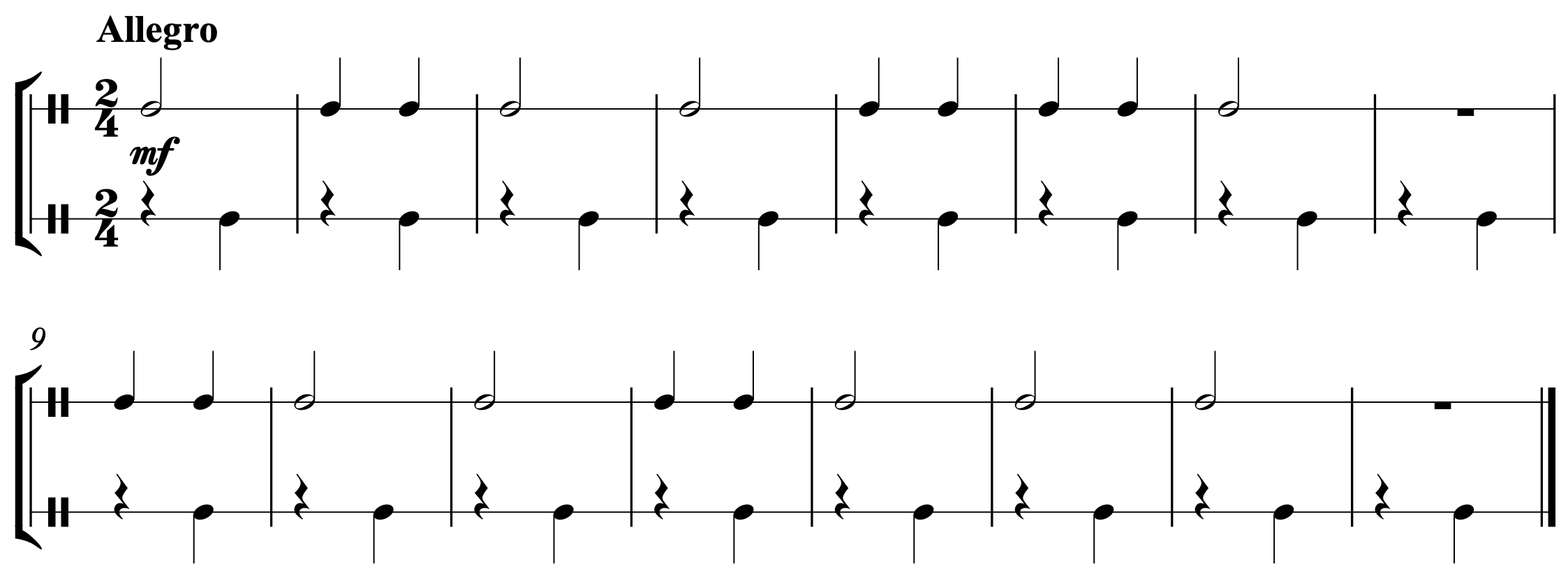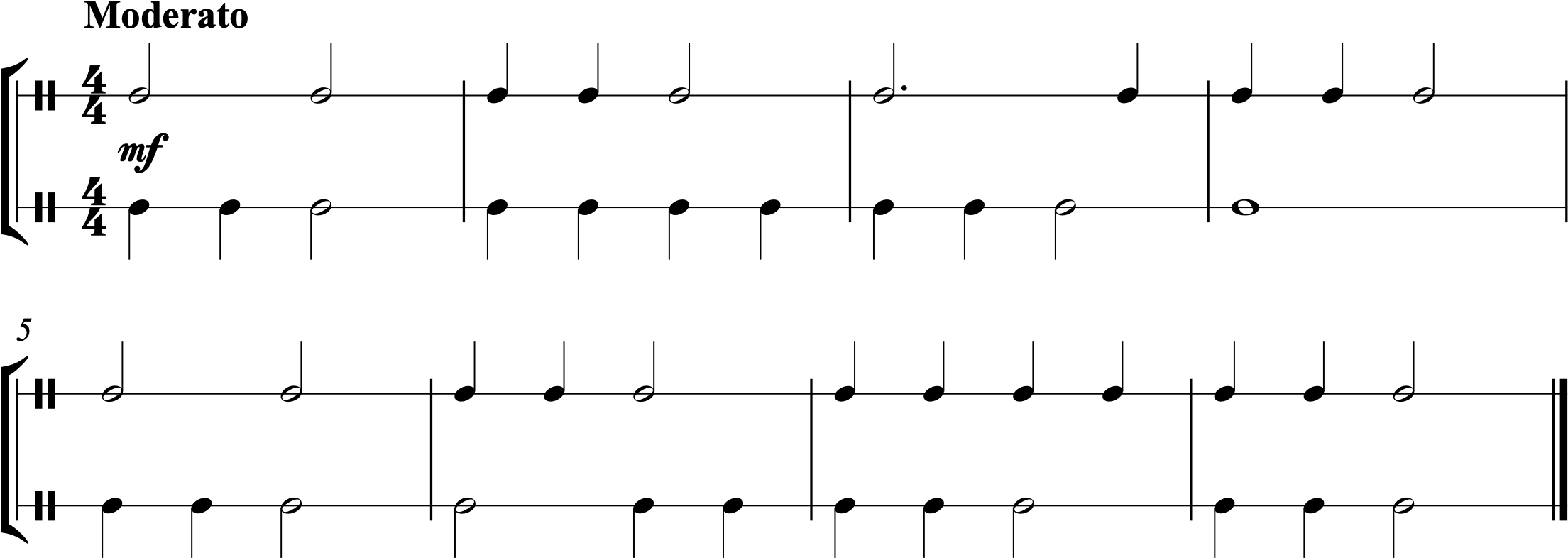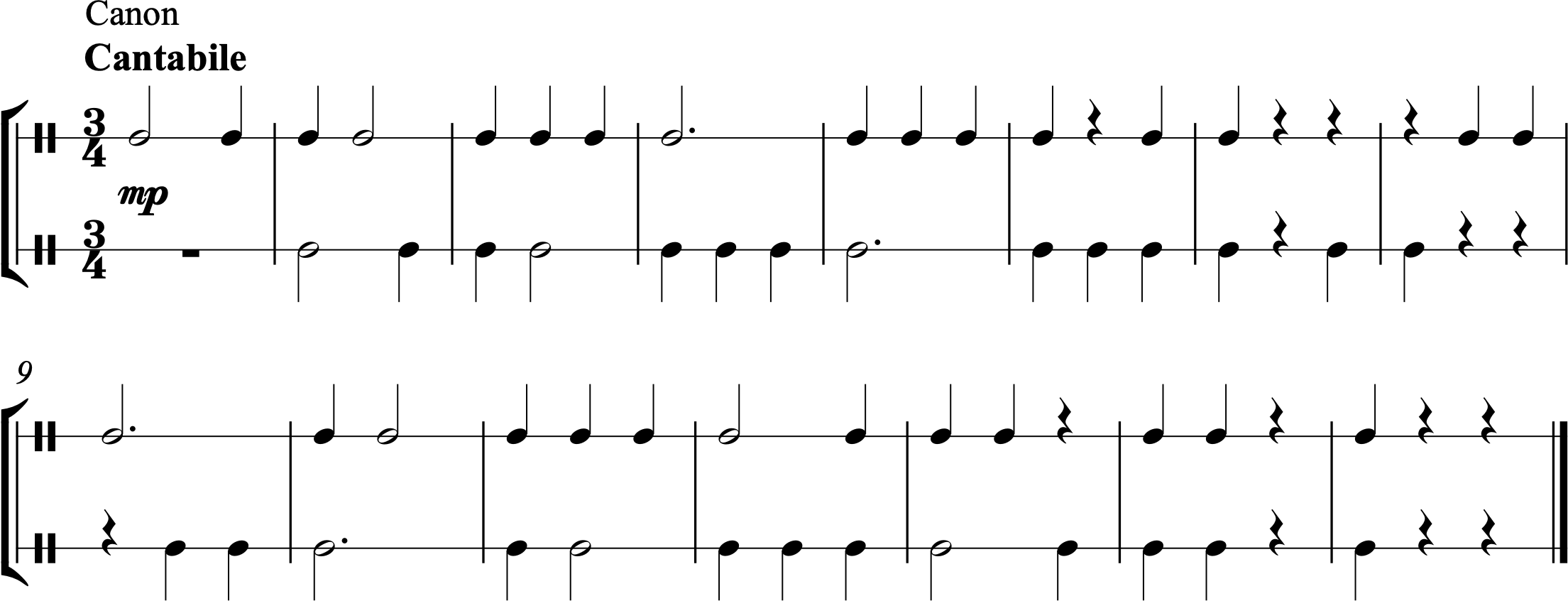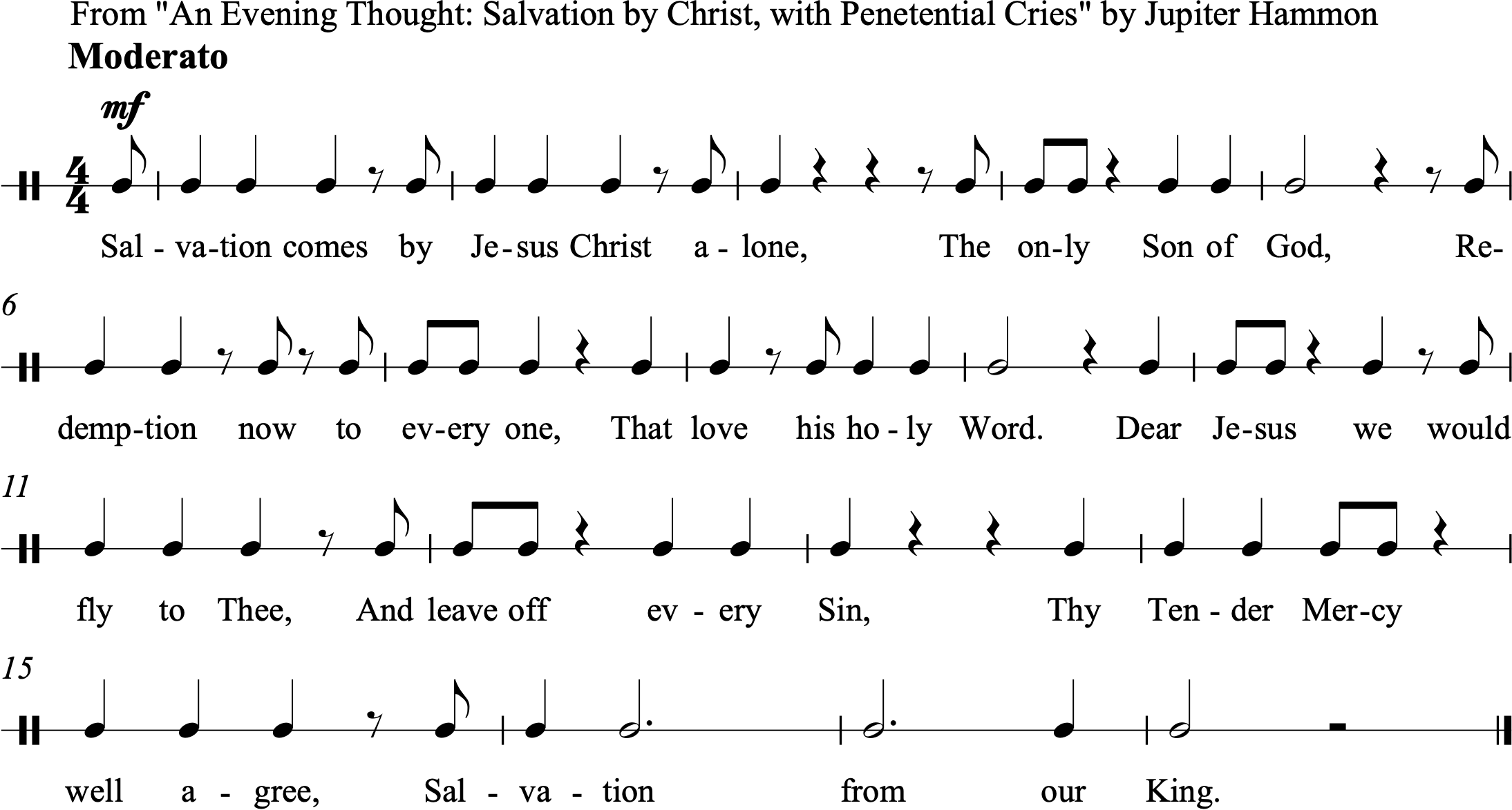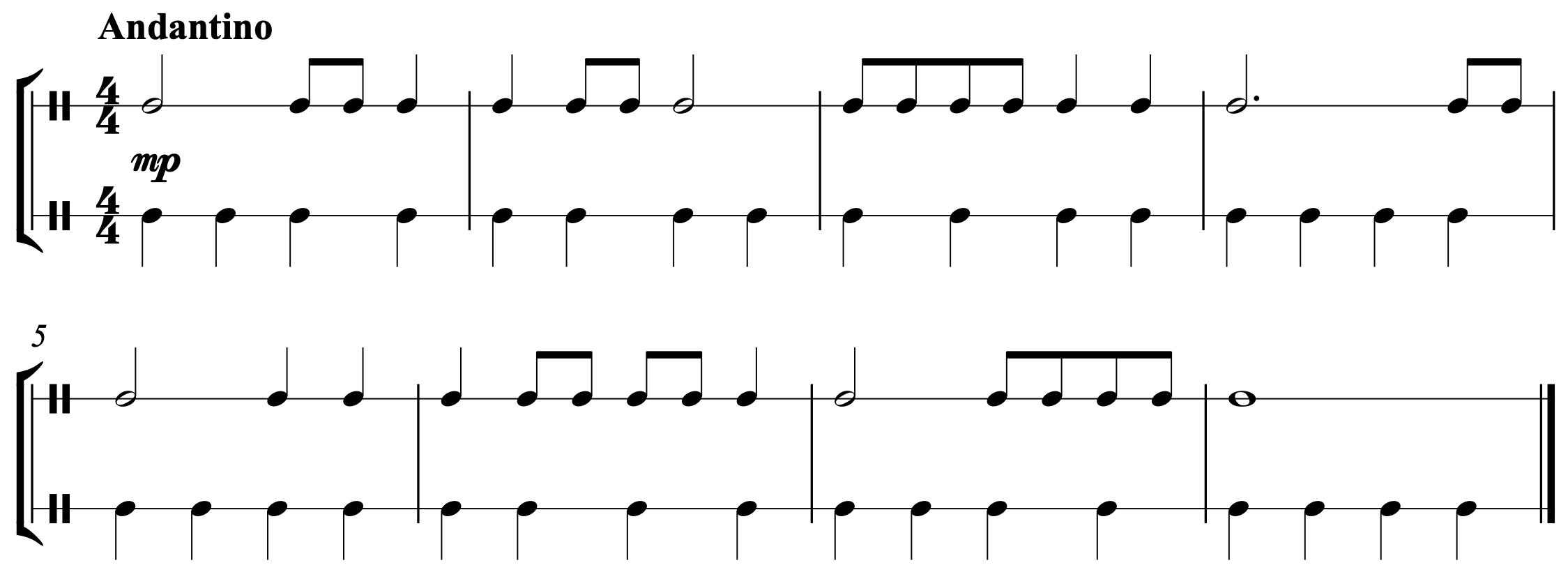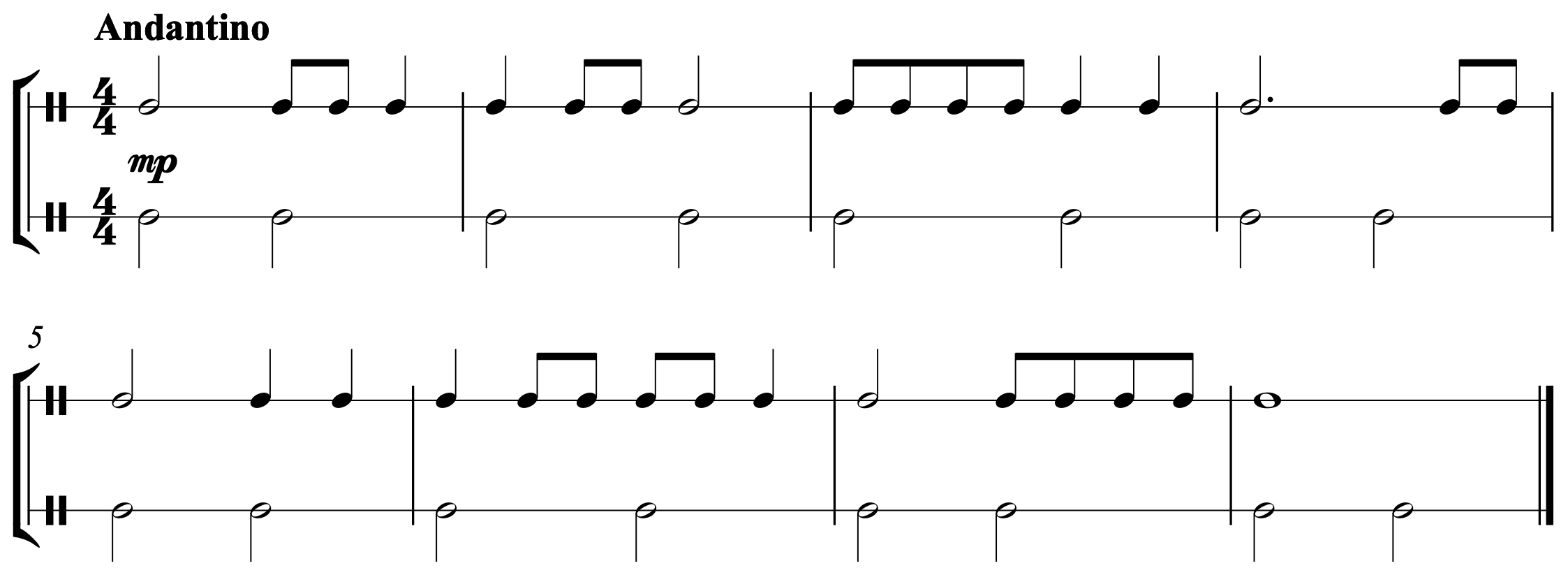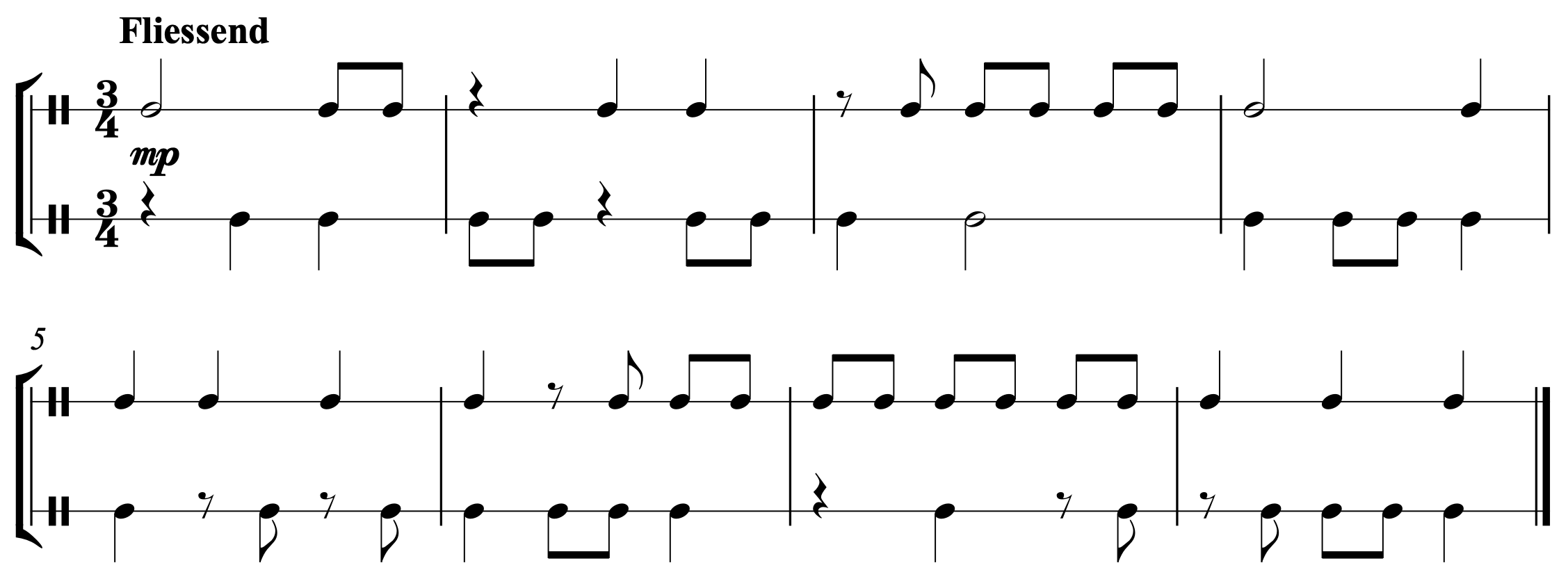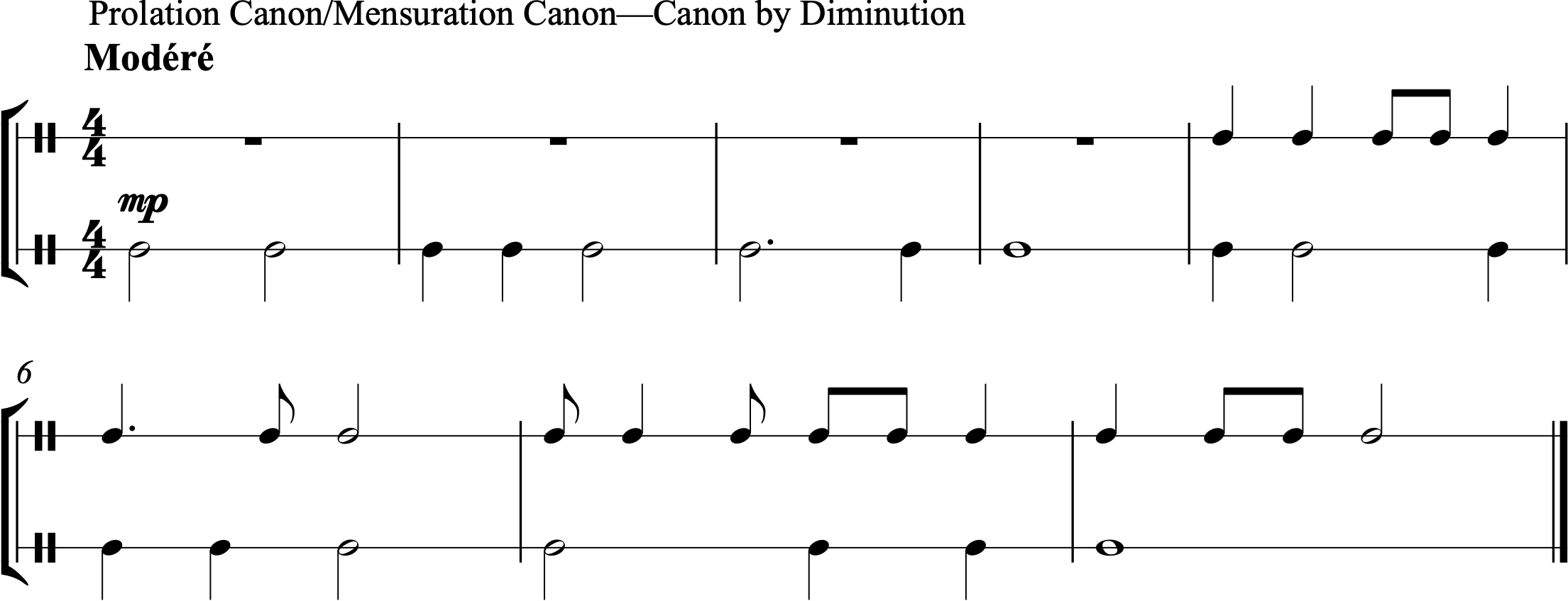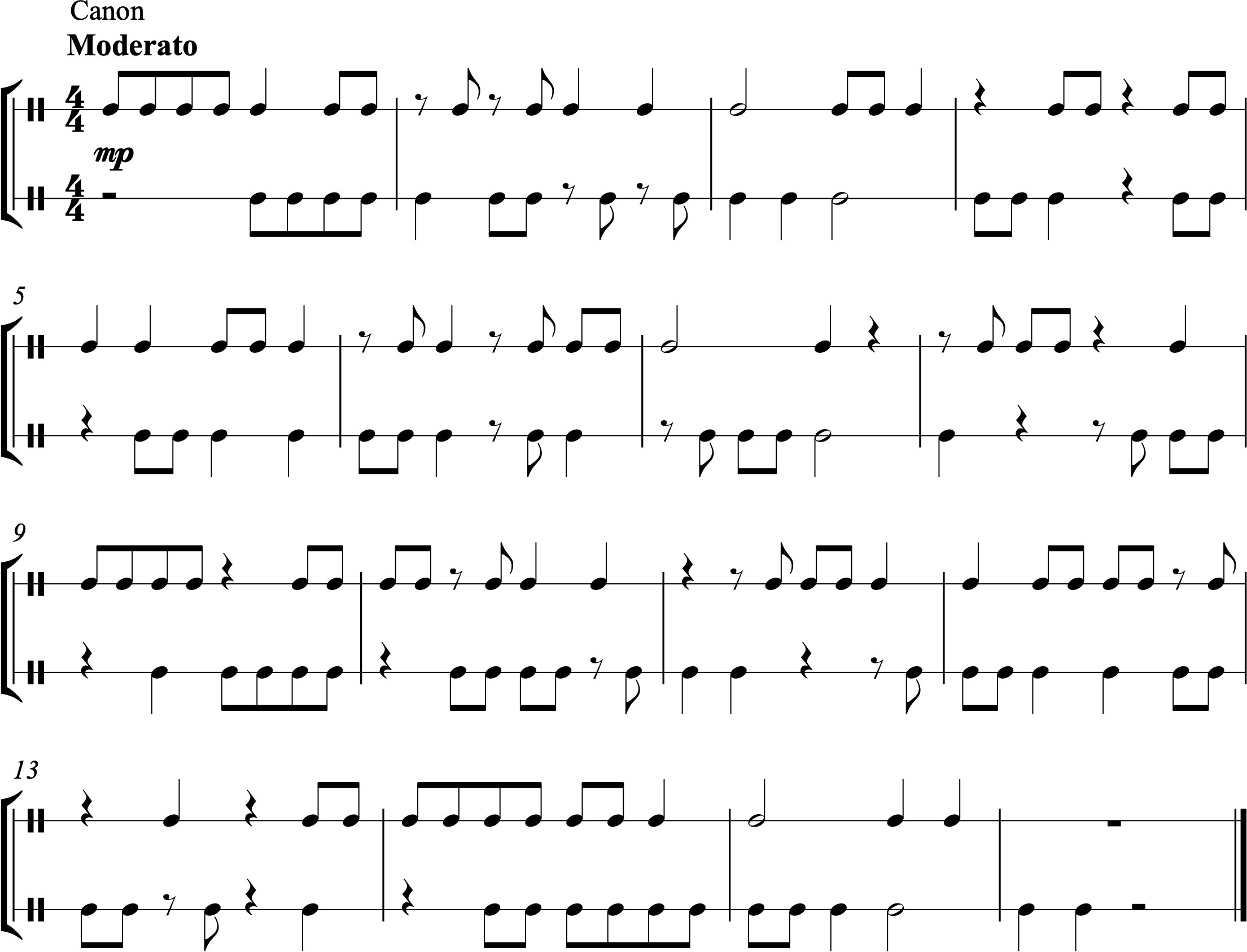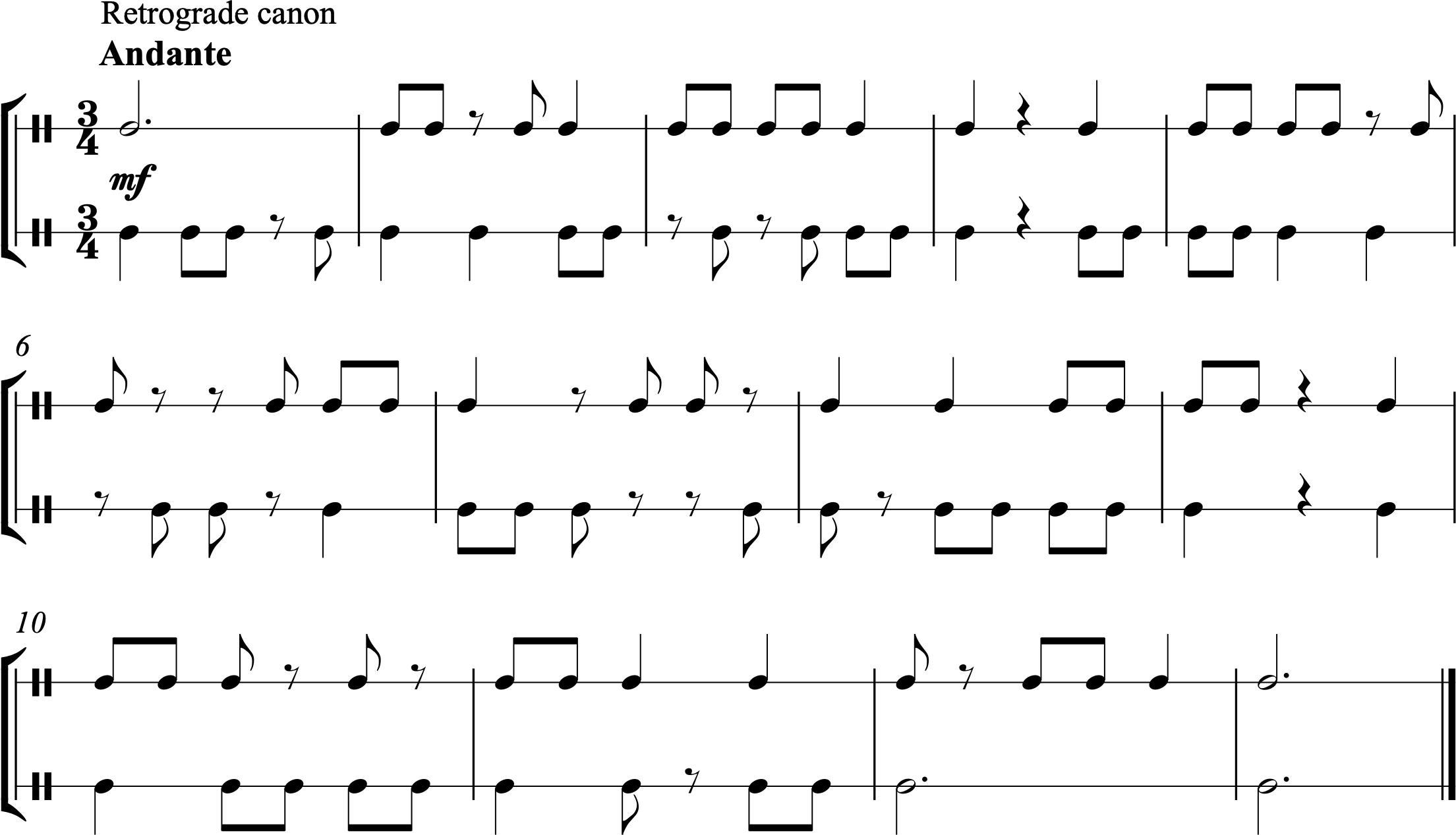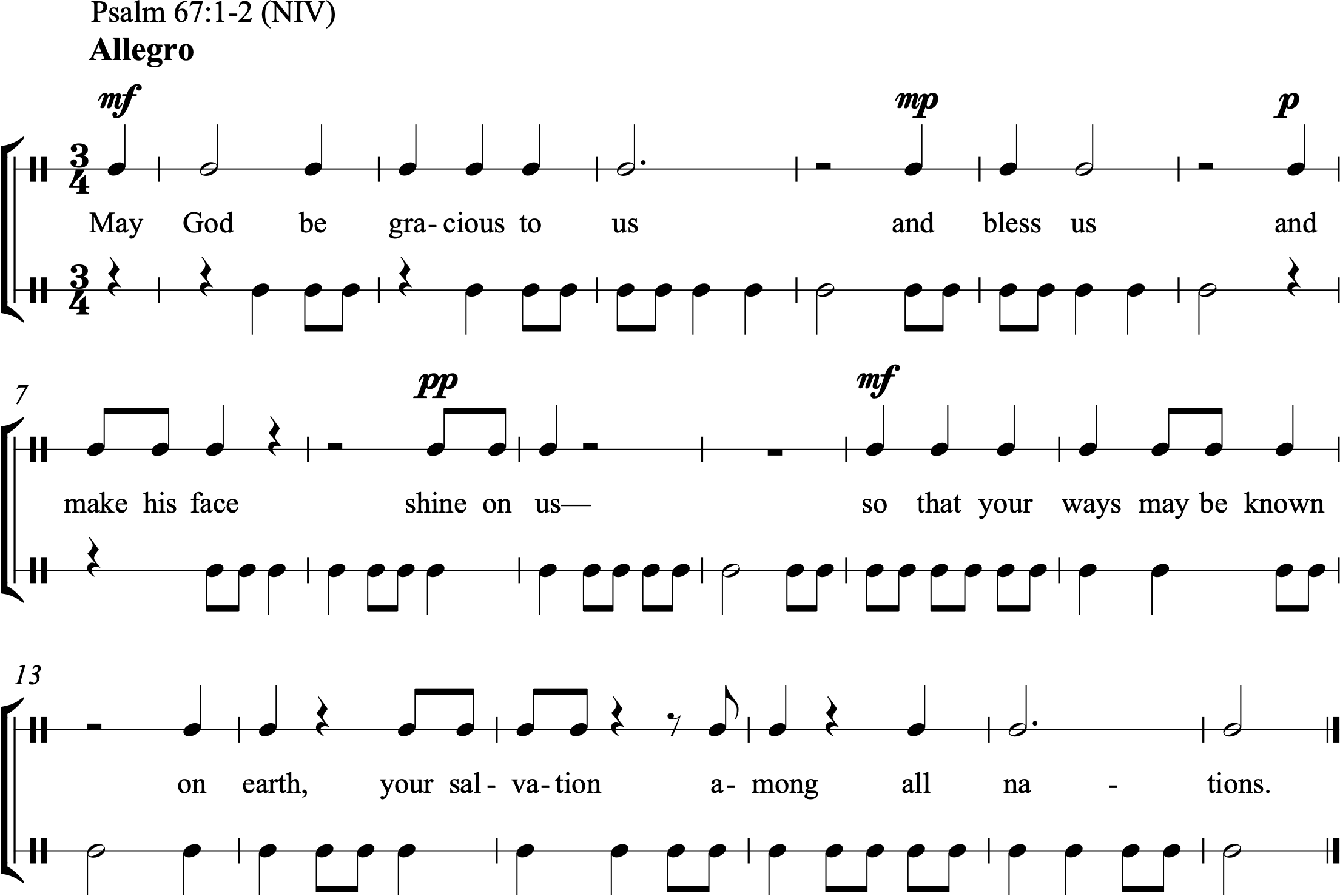Chapter 1: Introduction to Simple Meter
About This Chapter
About This Chapter: In this chapter, we will begin our exploration of simple meters—meters in which the beat typically divides into two equal parts (this is in contrast to compound meters, in which the beat typically divides into three equal parts; these will be introduced in Chapter 2). In Section A, we’ll start with some of the more basic rhythmic values: whole notes, dotted half notes, half notes, and quarter notes. In Section B, we’ll see those same rhythmic values, but with rests added in as well. In Section C, eighth notes will be introduced; Section D will add eighth rests.
Rhythmic Syllables: There are many different systems of rhythmic syllables used to speak rhythmic examples. This book will present one system, but you may encounter other systems elsewhere. For this chapter’s rhythms, here’s what you need to know:
- For each rhythmic attack that occurs on a beat, we’ll speak that beat’s number.
- It’s important to sustain each note for the indicated duration (so a whole note on beat 1 needs to be held four times as long as a quarter note on beat 1).
- Leave silence anytime there is a rest. In other words, you shouldn’t speak during the rests.
- For eighth notes, we’ll speak the word “and” (represented by “&”) for the eighths that occur off the beat. So a measure of 2/4 with all eighth note attacks—as seen in the example below—would be performed as “1 & 2 &.”
You can check out the demonstrations at the beginning of the following sections for a model of how to perform using these syllables.
Conducting: As you speak the rhythms, conduct along with the appropriate pattern for the time signature. For duple meters (meters that have two beats, like 2/4), conduct a duple pattern, which moves down-and-out, then back up, as seen in the figure:
For triple meters (meters that have three beats, like 3/4), conduct a triple pattern, which moves down, then out, then back up, as seen in the figure:
For quadruple meters (meters that have four beats, like 4/4), conduct a quadruple pattern, which moves down, then in, then out, then back up, as seen in the figure:
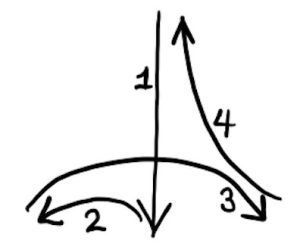
Section A—Introduction to whole notes, dotted half notes, half notes, and quarter notes
Practice
Practice A:
Practice by performing along with this audio file, which features a metronome click and the notated rhythm. You will hear one measure of wood block to establish the tempo before the exercise begins.
Next, try performing along with this audio file, which features the notated rhythm but no metronome click. You will hear one measure of wood block to establish the tempo before the exercise begins.
6.
7.
Section B—Introduction to rests
Practice
Practice B:
Practice by performing along with this audio file, which features a metronome click and the notated rhythm. You will hear one measure of wood block to establish the tempo before the exercise begins.
Next, try performing along with this audio file, which features the notated rhythm but no metronome click. You will hear one measure of wood block to establish the tempo before the exercise begins.
10.
11.
12.
13.
14.
15.
16.
17.
18.
19.
Section C—Two-part rhythms featuring whole notes, dotted half notes, half notes, quarter notes, and rests
Practice
20.
21.
22.
23.
24.
Section D—Introduction to eighth notes
Practice
Practice D:
 Practice by performing along with this audio file, which features a metronome click and the notated rhythm. You will hear one measure of wood block to establish the tempo before the exercise begins.
Practice by performing along with this audio file, which features a metronome click and the notated rhythm. You will hear one measure of wood block to establish the tempo before the exercise begins.
Next, try performing along with this audio file, which features the notated rhythm but no metronome click. You will hear one measure of wood block to establish the tempo before the exercise begins.
25.
26.
27.
28.
29.
30.
31.
Section E—Introduction to eighth-note rests
Practice
Practice E:
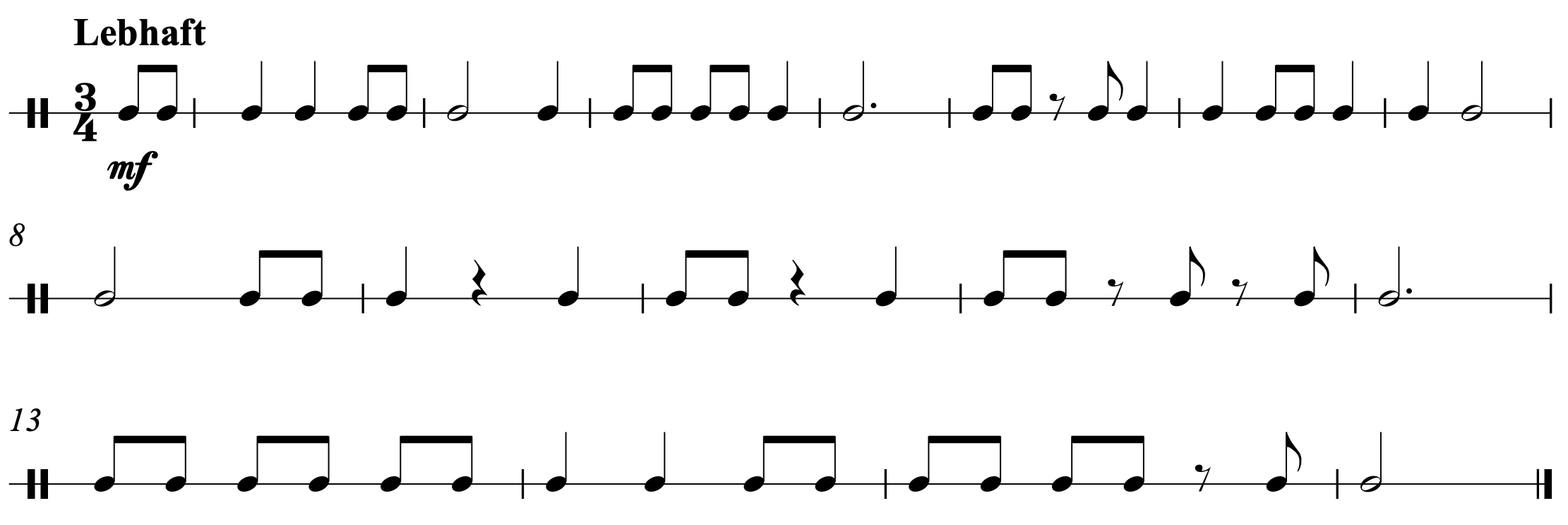 Practice by performing along with this audio file, which features a metronome click and the notated rhythm. You will hear one full measure of wood block to establish the tempo before the exercise begins.
Practice by performing along with this audio file, which features a metronome click and the notated rhythm. You will hear one full measure of wood block to establish the tempo before the exercise begins.
Next, try performing along with this audio file, which features the notated rhythm but no metronome click. You will hear one full measure of wood block to establish the tempo before the exercise begins.
32.
33.
34.
35.
36.
37.
38.
39.
40.
Section F—Two-part rhythms featuring eighth notes and eighth-note rests
Practice
41.
42.
43.
44.
45.
46.
























